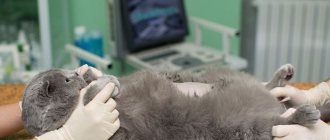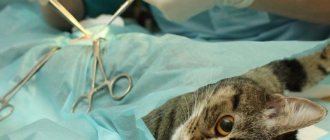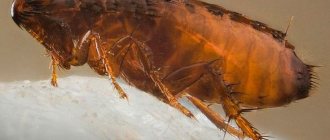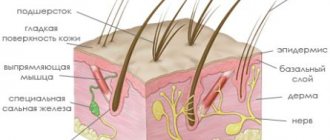9073Administration
1
A funny fluffy kitten brings joy to adults and children. But after a while it grows up, and problems associated with the adult instincts of the animal appear. The consequences of sterilizing cats do not harm its body. Therefore, in order to ensure peace for owners and their pets, they resort to optimal measures. The legislation of all civilized countries of the world requires mandatory sterilization of domestic animals not kept for breeding.
The procedure for castration of cats
Surgical castration of a cat is recommended before the age of one year, when the animal’s genitals have not yet fully formed and there is no sexual desire. This will eliminate severe stress and minimize the risk of complications. Postoperative wounds in kittens heal faster than in adult cats.
Neutering a cat provides several benefits:
- the pet becomes more affectionate and calm;
- the cat does not “mark” the house;
- the likelihood of escapes and long-term disappearances is reduced.
The lack of sexual desire eliminates the discomfort that a pet’s heart-rending screams create at night. The cat does not run away from home, does not communicate with stray animals, and the risk of contracting infectious diseases is eliminated.
There are contraindications to castration. Such operations should not be performed on sick, weakened animals, or during periods of exacerbation of chronic diseases. Castration is performed under anesthesia. If the cat has an individual intolerance to anesthetics, the operation cannot be performed.
Pet owners should follow all recommendations for preparation for castration and care during the rehabilitation period. This will eliminate the risk of complications and ensure rapid wound healing.
Caring for an animal after sterilization
Postoperative care for your cat requires careful attention. Sterilization is carried out under general anesthesia, which lowers the animal’s temperature. The place where the cat will lie should be placed on the floor, away from drafts and heating devices. After anesthesia, the animal's reflexes will be impaired , and it may fall from a chair or sofa. Cover the soft bedding with ironed cotton cloth. When your pet wakes up, you need to give her some water to wet her mouth.
The filler from the tray must be removed so that it does not get into the open wound. Instead, you can fill the tray with toilet paper or pharmacy diapers and change them regularly. To prevent the animal from licking and scratching the wound, you need to purchase a blanket made of light, breathable fabric. If the cat's persistence does not stop the blanket, you need to put a special plastic collar on the neck.
The seam must be inspected daily. Usually the wound heals quickly; after 10 to 12 days, the doctor will remove unnecessary staples or threads.
Cat sterilization operation
There are many reasons why cat owners turn to veterinarians to have their cats sterilized. The main argument is the reluctance to take care of cat offspring and place babies. But there are other positive consequences of such an operation. Neutered cat:
- has a calm, easy-going character;
- does not try to escape into the street;
- does not create discomfort by screaming at night and inappropriate behavior;
- does not communicate with stray animals, the risk of infections is eliminated.
During the operation, the tubes through which the eggs travel can be ligated, and the ovaries can be removed. The uterus remains during sterilization. Some owners prefer castration. In this operation, all reproductive organs are removed from the cat. This eliminates the risk of serious uterine diseases.
Surgical sterilization of a cat is a more traumatic operation than castration of a cat. But following the rules of postoperative care eliminates the risk of complications. The optimal age for sterilization of an animal is 7-8 months.
Possible problems after sterilization
Veterinarians assure that sterilization is completely harmless to the animal, but postoperative complications can arise after any surgical intervention. The disadvantages of the operation may be associated with the characteristics of the body (individual intolerance to drugs) or with internal diseases. Medical error cannot be ruled out either.
Internal bleeding is characterized by lethargy of the animal, refusal to eat, and meowing . A few days after the operation, the cat cannot lie on its stomach; touching and stroking causes pain. You need to see a doctor urgently.
Infection of the suture is expressed by redness and swelling. If symptoms do not go away 3 days after surgery, discharge from the wound has increased, and the temperature has risen, consultation with a veterinarian is necessary.
© shutterstock
Obesity can occur due to changes in the metabolic process after sterilization and the cessation of estrogen production. Both factors contribute to weight gain, so sterilized cats should not be overfed or use special food.
A lump near a suture is not considered a pathology. It is associated with the properties of tissue growth during healing, and will disappear a month after surgery.
Consequences and complications in a cat after sterilization rarely occur, but you need to be aware of them. An attentive owner should immediately consult a doctor if suspicious symptoms appear in his pet.
Moral and physiological arguments against
The main argument of opponents of sterilization and castration is the belief that depriving animals of the opportunity to procreate is inhumane. They believe that a cat has the right to motherhood and should not be deprived of this happiness. But we should not transfer human feelings to animals and attribute our experiences to them. In addition, a cat or cat that is sterilized at an early age is completely unaware of suffering and regret. They have not experienced sexual desire and are not aware of its existence.
Some owners refuse to spay or neuter their pet for fear of harming its health. It is known that after such operations there is a real risk of obesity, diabetes, and disorders in the functions of other organs. However, there is a way to avoid such problems. To do this, you must strictly follow the rules of feeding castrated and sterilized animals. Their diet differs from the standard menu.
Goal No. 4. Children happen after sex!!!!
Which need to go somewhere!!!!! In a year or two, all your friends and acquaintances will be gifted with the gratuitous offspring of a terrorist father... And they will look at you askance... as if you were a maniac and a pimp... And, what is most unpleasant, the children for the most part become unhappy... Because... having received such a gift as a gift a kitten, they don’t value it and they can easily bring it back to you (it’s a year old, like we’ve had enough of playing) or, even worse, throw it out into the street! Or the cat's owners will throw the entire litter outside at once. Yes, yes, this happens often! Believe my experience, a lot of people call the club to report babies found in trash cans and stairwells...
But I’m not just talking about outbred or half-bred matings. It turns out that no one needs breeding kittens in such numbers as one active male can produce with an active owner... That is, you are harming the breed by excessive reproduction (this concept should not be confused with breeding). Moreover, the owners probably did not think about the type, but rather thought more about the possibility of satisfying the cat or getting money for mating...
Moreover, at the same time, the prestige and price of the breed (and its breeding value) decreases... Which is simply painful for professional breeders and experts to see! Breeding should be carried out by professionals or amateur fanatics under the strict supervision of professional felinologists! This truth is known all over the world and has been tested by the practice of many breeds of animals (not just cats). Cynology and hippology have more experience in selection...
Consequences of refusing to sterilize a cat
Owners who refuse to sterilize their beloved cat will have to choose one of three options:
- give the animal special drugs to suppress sexual desire;
- patiently endure periods of “desire”;
- provide the animal with complete freedom.
Special drops and tablets help suppress sexual desire. Please note that these are hormonal drugs. Taking them can have a negative impact on the cat’s body. The most common consequence of using such drugs is a malignant tumor.
Not all owners can calmly survive periodic changes in the character of the animal. The most unpleasant moment is the pet's heart-rending screams at night. These heartbreaking sounds disturb not only the cat's owners, but also their neighbors, which creates additional problems.
Giving the cat complete freedom is not the best option. She can become a mother as early as six months, when her body is not yet fully formed. Then a healthy animal can kitten two or three times a year. Finding homes for kittens of popular, rare breeds is not too difficult. But mongrel babies can create a lot of problems.
It is no secret that many cat owners do not complicate their lives and immediately kill their newborn offspring. Such actions should not even be discussed. If it is inhumane to deprive a cat of the opportunity to procreate, then destroying born kittens is completely inhumane.
Goal No. 5. But there is also an ethical side of castration...
Well, the cat took a walk in the dacha. I rested and walked... Do you remember those numerous offspring left under the sheds and in the basements? Unhappy Exepyury hiccups a hundred times a day for his words about “responsibility for those he has tamed”... Or do you prefer to follow the opinion “a cat is not a girl, it won’t bring it down.” That is, if you don’t see the “result” yourself, that means it doesn’t exist?!
And there are also 6 and 7... But I prefer to continue this for you yourself in order to understand the necessity (and not the benefits or harms of castration). Numerous studies abroad and here speak about the benefits of castration. In the same civilized America and Europe that we respect, they talk about the benefits of early castration...
Russian problem of homeless animals
In every city and town you can see many stray cats. Most of these unfortunate animals are abandoned pets that were born after the cat was given complete freedom. There is no need to explain how difficult it is to live on the street. But animals manage not only to survive, but also to have offspring. Therefore, the number of stray cats is growing rapidly.
Street animals pose a threat to pets. They are often carriers of:
- worms,
- ticks,
- retroviruses,
- chronic runny nose,
- eye diseases, etc.
Supporters of castration and sterilization consider refusal of these operations to be irresponsible. If the consequence of such a decision is to increase the army of stray cats, these accusations are well founded.
Much attention is now being paid to solving this issue. Shelters are organized for homeless animals, and sterilization and castration campaigns are held for street cats and female cats. But this does not mean that the problem will be solved in the near future. Is it worth complicating it by justifying the refusal of sterilization on moral principles?
Goal No. 2. Out of pity.
Out of pity, we castrate them... That is. Imagine your husband, who needs to “fast”... well, let's say... 1/3 of his life, i.e. about 20 years!!!! IN! How will his face change? A!!! So there you go! And this is exactly what we condemn the cat to in city apartments!!!!! Castration is our price for domesticating cats. Therefore, convince your husbands, ardent supporters of “fullness” to be in solidarity with the cat and feel sorry for him... Otherwise, see point 1: he will start shitting in the shoes of the protector and the authority and the head of the family, so he himself will call the doctor!
And here some opponents come to point 3...
How and what to feed after castration?
After the operation, you can feed the cat only after 8-10 hours and after full awakening.
If you try to feed him earlier, he will most likely just throw up. The stomach is not yet ready to receive food and cannot digest it. But you can’t limit water; it should always be in sufficient quantity and accessible. It is better to give liquid food after surgery; it can be meat broths, fermented milk products, if there is no lactose intolerance. Try not to overload the cat's stomach, maintain a light diet. Temporarily exclude:
- dry food;
- canned food;
- meat;
- fish;
- porridge or cereals;
- vegetables.
Introduce food into the diet gradually, you can dilute it with water. Nutrition must be kept under control in the future. A pet accustomed to natural food can eat beef, rabbit, some boiled vegetables and cereals. It is advisable to periodically give your pet vitamin supplements. Feeding food from the table is highly undesirable.
After castration surgery, even if the cat has been accustomed to dry food, change it to a special one designed for neutered cats. Introduce it into your diet gradually. An animal's refusal to eat for more than 2 days is a reason to consult a doctor. This may be caused by an inflammatory process in the body.
When does a cat go into heat?
Unlike dogs, a cat in heat does not have vaginal discharge, but there are certain behavioral signs. The most common ones that an owner may notice is that the cat becomes unusually affectionate and quite loud. In cats, the first heat cycle can begin between four and six months of age, although the average age of most cats is between five and nine months. Once your kitten goes into her first heat, the hormones in her body will make her eager to find a mate. She will most likely scream in what will sound like agony. She can roll on the ground and rub against everything in sight. Therefore, it is better to sterilize your cat before the onset of her first heat.
Breeding a purebred cat is very profitable, so there is no need to rush into sterilization
Having bought a kitten from a nursery, some people expect to “recoup” the costs by breeding the pet several times. The lack of documents (pedigree) is not an argument, because many people want to take a cheaper purebred kitten.
In practice: mating with a purebred cat costs money, and the result is not guaranteed. Would-be entrepreneurs spend money on emergency caesarean sections in the night, treatment of postpartum endometritis in the case of stillborn kittens, and the fight against mastitis, in which the babies have to be fed instead of the cat.
Kittens need to be vaccinated, and first given anthelmintic - this is also a cost. Rare people agree to buy a kitten that is not vaccinated. If the baby has an umbilical hernia, it will not be possible to place him at full cost. And in principle, the price for kittens from a mother who is not registered in the club and has not received evaluations at exhibitions cannot be high.
In other words, a seemingly profitable event turns into a lot of hassle, and it’s good if the costs at least pay off.
Neutered cats live shorter lives
Statistics are a stubborn thing. According to numerous studies, sterilized cats live 1.5-2 times longer than their uncastrated counterparts! This is due to a combination of factors. Neutered cats have less contact with their relatives, are less likely to get into fights, and do not try to run away from home (fall out of a window, die in the teeth of a dog, get hit by a car). They do not suffer from numerous gynecological diseases: postpartum endometritis, pyometra, ovarian cyst. They do not die as a result of difficult childbirth or missed abortion. Early sterilization greatly reduces the risk of breast cancer (their tissue remains underdeveloped without exposure to hormones).
Minuses
- the cat will have double stress: from the operation itself and from the change in living conditions;
- Not every clinic has truly responsible doctors, so it is possible that the pet may be “forgotten” and the necessary procedures may not be carried out on time. This issue needs to be further clarified with the owners of other patients;
- a cat may be very offended that its owner abandoned it in a difficult situation;
- the possibility of contracting a viral infection cannot be ruled out;
- Keeping a veterinary clinic is quite expensive.
And finally. If a sterilized cat screams, then this is a reason to see a doctor. Complications cannot be ruled out. If this happens in the first weeks after surgery, then this is a simple consequence of hormonal levels. Does a neutered cat ask for a male cat? No. After the operation there will be no problems with her screams and marks.
How difficult is the postoperative period?
Modern methods of surgery involve low-traumatic interventions. Fortunately, gone are the days when it was an extensive abdominal operation along the so-called white line with a huge postoperative suture. Now, during a normal operation, the seam does not exceed a few centimeters. And even less with more modern laparoscopic surgery, in which the trauma for the animal is minimal. Post-operative care consists of treating this small suture for several days and visiting the veterinarian a week later to remove it if non-absorbable threads were used. So there is nothing complicated. Anyone can handle caring for an animal after sterilization.
Do I need to sterilize?
Veterinarians are of the opinion that pregnancy and childbirth, even those occurring without pathologies, shorten the years of a cat’s life.
Sterilization is also necessary if the pet never goes out for walks. Lack of contact with the opposite sex does not help to avoid problems. Hormonal surges lead to the animal screaming, marking, and suffering from heat.
Hormonal instability and endless mood swings have an extremely negative impact on health. The risk of tumor formation in the mammary glands, ovaries, uterus and inflammation in the internal genital organs increases significantly.
Quite often, unsterilized cats develop a disease called pyometra. Its appearance is promoted by uncontrolled mating, as well as the regular use of hormonal agents to suppress sexual desires.
It happens that pyometra begins in older, nulliparous cats. Inflammatory phenomena in the uterus are formed due to hormonal imbalance or due to untreated endometritis.
Complications and consequences of pyometra can be the most serious. But those animals whose uterus and ovaries have been removed may not be afraid of this disease.
Sterilization eliminates phenomena associated with an excess of hormones, which helps improve the character and behavior of the animal, making it more obedient, soft, and adequate. The likelihood of breast diseases is significantly reduced. The risk of diseases of the ovaries and uterus is completely eliminated.
Additional drugs
If the operation was successful and the animal itself is healthy, then it does not require additional drug treatment. However, the following groups of medications may be needed:
- Antibiotics. As a rule, one injection is given during surgery. This is necessary to avoid infection. They may be needed if the animal licks the seam. But in this case, the recovery process will drag on for another 2-3 weeks.
- Vitamins are given to weakened cats if they feel unwell during the postoperative period.
- Hemostatic agents will be needed if blood clotting is poor, if blood is constantly oozing from the suture.
- Anti-infective serum is useful if the owner decides to leave the pet for a recovery period in a veterinary clinic.











